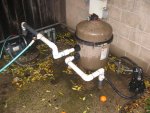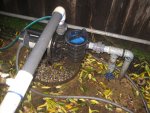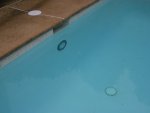I received my K-2006 last night and did my first readings tonight...
FC: 10
CC: 0
pH: 7.6
TA: 250
CH: 200
CYA: 100
So am I correct in thinking that if I need to get my CYA down by half (or more), than I would have to dump half (or more) of my water and refill? Ouch! I guess I would want to do that first before trying to fix anything else.
What changes if I decide to live with a high CYA, other than higher levels of FC? Does it increase my CH demand after the level of FC is initially raised?
Is it ok to use a swizzle stick to stir the samples? I don't seem to have much luck swirling and getting stuff to mix. It seems like it would be ok, as some people use those magnetic stirrers.
Thanks!
FC: 10
CC: 0
pH: 7.6
TA: 250
CH: 200
CYA: 100
So am I correct in thinking that if I need to get my CYA down by half (or more), than I would have to dump half (or more) of my water and refill? Ouch! I guess I would want to do that first before trying to fix anything else.
What changes if I decide to live with a high CYA, other than higher levels of FC? Does it increase my CH demand after the level of FC is initially raised?
Is it ok to use a swizzle stick to stir the samples? I don't seem to have much luck swirling and getting stuff to mix. It seems like it would be ok, as some people use those magnetic stirrers.
Thanks!




